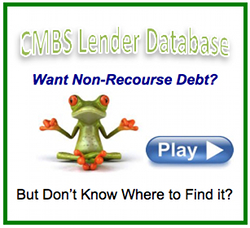Warning: Use of undefined constant user_level - assumed 'user_level' (this will throw an Error in a future version of PHP) in /home/zzgspc5zic0z/domains/findthecapital.com/html/wp-content/plugins/ultimate-google-analytics/ultimate_ga.php on line 524
Warning: Use of undefined constant user_level - assumed 'user_level' (this will throw an Error in a future version of PHP) in /home/zzgspc5zic0z/domains/findthecapital.com/html/wp-content/plugins/ultimate-google-analytics/ultimate_ga.php on line 524
Article by, Agustino Fontevecchia, Forbes Staff Boosted by Ben Bernanke and turbocharged by tight inventories and strong recoveries in the worst hit cities, home prices continue to grow strongly. The widely followed Case-Shiller indexes showed the price of single-family homes across 20 of the most important U.S. cities grew 9.3% in February, its fastest rate since May of 2006 before the collapse of the housing bubble and subsequent financial crisis. The housing recovery is already having a positive impact on growth, pushing GDP up as residential investment accelerates, but with more than 1.1 million homes in some state of foreclosure and a shadow inventory that tops 2 million units, it will take some time for the market to truly heal, while the risk of slowdown and a reversal remains a possibility. It comes as no surprise that the housing market is firing on all cylinders, but the February data, released on Wednesday, was quite encouraging. The 10- and 20-city composites gained 8.6% and 9.3% on a year-over-year basis, with every metropolitan area clocking in a second consecutive month of positive growth for the first time since early 2005. Phoenix was the strongest performer, growing at an impressive 23% and joining the likes of Las Vegas, Atlanta, and San Francisco, some of the worst-hit cities in the crisis, in their rapid pace. Prices have now climbed back to their autumn 2003 levels, prompting index chairman David Blitzer to say “despite some recent mixed economic reports for March, housing continues to be one of the brighter spots in the economy.” Housing has been additive to growth for some time now, as Blitzer explained, “the 2013 first quarter GDP report shows that residential investment accelerated from the 2012 fourth quarter and made a positive contribution to growth.” Few would venture to say that housing isn’t on the mend right now. Over the past several months prices have increased on the back of incredible support by the Federal Reserve, which has taken its balance sheet north of $3.3 trillion, buying more than $1 trillion in mortgage-backed securities. Investor demand for housing assets has skyrocketed, taking homebuilders’ stocks to multi-year highs. KB Home, Lennar LEN -0.21%, and Toll Brothers TOL -0.11%, for example, are...
Warning: Use of undefined constant user_level - assumed 'user_level' (this will throw an Error in a future version of PHP) in /home/zzgspc5zic0z/domains/findthecapital.com/html/wp-content/plugins/ultimate-google-analytics/ultimate_ga.php on line 524
Warning: Use of undefined constant user_level - assumed 'user_level' (this will throw an Error in a future version of PHP) in /home/zzgspc5zic0z/domains/findthecapital.com/html/wp-content/plugins/ultimate-google-analytics/ultimate_ga.php on line 524
Article by, Morgan Brennan, Forbes Staff The residential tower under construction at 432 Park Avenue in Manhattan will have plenty of opulent amenities to draw the moneyed crowd: The units, which start at $7 million, feature private elevator landings, 12.5-foot ceilings, separate servant entrances, heated bathroom floors and the option to buy additional climate-controlled wine cellars and guest apartments. The building will have a 75-foot-long pool, a private restaurant for residents, room service and catering, even chauffeur service. But for all of the over-the-top features of the Rafael Vinoly-designed tower, the one sure to get the most attention will be its height. 432 Park Ave will jut 1,396 feet into the air over midtown Manhattan upon completion in 2015. At that lofty height, the building, developed by CIM Group and Macklowe Properties, will be New York City’s third-tallest behind One World Trade Center and the Empire State Building. It will also become the Western Hemisphere’s tallest residential tower, eclipsing the 870-foot rental tower New York by Gehry in Lower Manhattan, Midtown’s up-and-coming 1,004-foot One57, and Chicago’s 1,389-foot (spire included) Trump International Hotel and Tower. “People want views. This will be a game-changer for the upper echelon of New York,” asserts Jarrod Guy Randolph, a luxury real estate broker with CORE in New York who has toured the sales center, which has been kept under wraps since its discreet opening in March. Gallery: The World’s New Wave Of Tallest Residential Towers 432 Park Ave is the latest example of a race skyward among luxury residential developers. With the housing market in recovery mode, developers are taking multifamily buildings to staggering new heights, vying for the title of tallest tower and the prestige that translate into larger returns on investment while delivering the breathtaking views buyers are seeking. “What developers are looking to do is set themselves apart,” notes Randolph. “They are doing this because they can build that tall and capitalize on the land.” In the past, most of the world’s tallest buildings were erected to provide office space, like Chicago’s Willis Tower and the Empire State Building. The shift toward high-rise dwelling started about 15 years ago, according to the Council on Tall Buildings and Urban Habitat, as interest...
Warning: Use of undefined constant user_level - assumed 'user_level' (this will throw an Error in a future version of PHP) in /home/zzgspc5zic0z/domains/findthecapital.com/html/wp-content/plugins/ultimate-google-analytics/ultimate_ga.php on line 524
Warning: Use of undefined constant user_level - assumed 'user_level' (this will throw an Error in a future version of PHP) in /home/zzgspc5zic0z/domains/findthecapital.com/html/wp-content/plugins/ultimate-google-analytics/ultimate_ga.php on line 524
Article by, Catherine Clifford Past performance is no guarantee of future results, as the old business truism says. But you also may have heard that you can’t know where you’re going without knowing where you have been. To get a sense of which industries small businesses are growing in, the analysts at Raleigh, N.C.-headquartered private-company financial-information company Sageworks ran some numbers for Entrepreneur.com. Here’s a look at the industries where U.S. companies with $10 million or less in annual sales have shown the highest and lowest percentage change from Jan. 1 to Dec 31, 2012. As a benchmark, the average growth rate across all U.S. small businesses in the time period was 8 percent, says Libby Bierman, an analyst at Sageworks. Fastest-Growth Industries for U.S. Small Businesses in 2012 Residential building construction: 14.77 percent Building custom software and servers for businesses: 14.29 percent Machinery, equipment, and supplies merchant wholesalers: 13.75 percent Management, scientific, and technical consulting services: 12.31 percent Architectural, engineering, and related services: 11.40 percent Foundation, structure, and building exterior contractors: 11.37 percent Building finishing contractors who make additions, alterations, maintenance and repairs: 11.32 percent General freight trucking: 10.41 percent Services to buildings and dwellings, including pest exterminators, janitorial services, and landscaping: 10.11 percent Other specialty trade contractors, including site preparation activities and other specialized trades: 10.04 percent Slowest-Growth Industries for U.S. Small Businesses in 2012 Skilled nursing care facilities: -3.29 percent Printing and related support activities: 1.86 percent Automotive repair and maintenance: 2.81 percent Offices of physicians: 3.00 percent Highway, street, and bridge construction: 4.24 percent Insurance agencies, brokerages, and other insurance-related activities: 4.32 percent Lessors of real estate: 5.07 percent Other miscellaneous manufacturing including jewelry and silverware, sporting and athletic goods, dolls, toys, and games, office supplies other than paper, and signs: 5.55 percent Offices of health practitioners other than physicians and dentists, including chiropractors, optometrists, mental health practitioners, speech and occupational therapists: 5.98 percent Other amusement and recreation services including bowling centers, golf courses, and recreational centers: 6.03 percent The good news for entrepreneurs is that much of the fastest growth is in service businesses, which can be started without a lot of money to buy equipment and inventory, says Bierman. Software development, management consulting and architecture...
Warning: Use of undefined constant user_level - assumed 'user_level' (this will throw an Error in a future version of PHP) in /home/zzgspc5zic0z/domains/findthecapital.com/html/wp-content/plugins/ultimate-google-analytics/ultimate_ga.php on line 524
Warning: Use of undefined constant user_level - assumed 'user_level' (this will throw an Error in a future version of PHP) in /home/zzgspc5zic0z/domains/findthecapital.com/html/wp-content/plugins/ultimate-google-analytics/ultimate_ga.php on line 524
Jonathan Miller of the Urban Land Institute discusses Emerging Trends in Real Estate 2013 with a focus on Canada and how it differs from the U.S.
Warning: Use of undefined constant user_level - assumed 'user_level' (this will throw an Error in a future version of PHP) in /home/zzgspc5zic0z/domains/findthecapital.com/html/wp-content/plugins/ultimate-google-analytics/ultimate_ga.php on line 524
Warning: Use of undefined constant user_level - assumed 'user_level' (this will throw an Error in a future version of PHP) in /home/zzgspc5zic0z/domains/findthecapital.com/html/wp-content/plugins/ultimate-google-analytics/ultimate_ga.php on line 524
The following guest post is by David Drake, founder and chairman of LDJ Capital, a New York City private-equity firm, and of The Soho Loft, a global financial media company with divisions in Conference & Expo, Publishing, and Consulting. Drake has spent 15+ years working with general partners, and with institutional and multi-family office limited partners, in real-estate-focused funds and fund of funds. Crowdfunding is rapidly changing the real-estate investment market, offering developers new ways to finance projects, small investors a way in, and the socially conscious an avenue to support their local communities—and their local farms. Here is a rundown of the real-estate crowdfunding firms I think will have the biggest impact. (Full disclosure: I have advised Primarq (number 7) on its secondary market strategy, where investors can sell their shares without having to liquidate the actual properties.) 1. Fundrise –The company lets people invest in their local communities, earning profits while becoming socially involved. Since its August launch it has raised $575,000 for two projects in Washington, DC—a food market and the rehabilitation of a closed library into an apartment building with retail space. 2. Realty Mogul– Launched last month, this firm already has funded two deals (worth about $200,000) while raising $500,000 in seed money. Accredited investors pool money to buy shares of pre-vetted investment properties for as little as $5,000. It was incubated by Microsoft MSFT +3.66%Techstars and won top awards in pitch competitions. 3. RealtyShares– This platform went on beta launch in November; it claims 289 investors intending to invest $1.5 million. As little as $500 can buy shares in commercial real estate, apartment buildings, and homes. It is led by a team of Berkeley students trained in finance, engineering, law, business, and media studies. 4. Fquare– The firm lets you invest in pre-vetted farmland for as little as $5,000. Farmers sell their land for 3-6% annual interest on 5- to 20-year leasebacks; once the lease expires investors sell the land and share the profits. There’s also a program to rent farm; instead of paying rent, the farmers deliver their harvest to food banks. 5. Collaperty – The first real-estate crowdfunding network is still little more than social. It lists real-estate opportunities and connects investors . It currently has 79 members collaborating on 14 real-estate deals, and is...
Warning: Use of undefined constant user_level - assumed 'user_level' (this will throw an Error in a future version of PHP) in /home/zzgspc5zic0z/domains/findthecapital.com/html/wp-content/plugins/ultimate-google-analytics/ultimate_ga.php on line 524
Warning: Use of undefined constant user_level - assumed 'user_level' (this will throw an Error in a future version of PHP) in /home/zzgspc5zic0z/domains/findthecapital.com/html/wp-content/plugins/ultimate-google-analytics/ultimate_ga.php on line 524
These three steps will help you determine what your new business is worth. Article by, Asheesh Advani It’s commonly said that business valuation is more art than science. If this is true, then the practice of valuing a startup business is squarely in the domain of the artist. Nevertheless, entrepreneurs need to put a value on their startups in order to raise money, and investors need to put a value on their investments to generate liquidity. Since neither entrepreneurs nor investors are known for right-brain artistic thinking, this article aims to provide some tips for left-brain thinkers to make sense of startup valuation. 1. You are what the market says you are. If investors are telling you that your startup is worth $1 million, then that’s what it’s worth. You might think it’s worth more. You might even know it’s worth more because your company may have more than $1 million is liquid assets, or more than $1 million in receivables, or more than $1 million in sweat equity. But if you’re unable to raise money for your startup with a valuation above $1 million, then you’ll have to accept the market valuation. However, this isn’t always true. If you raise money from relatives and friends rather than professional investors, it’s possible that your company has been overvalued or undervalued (more likely, overvalued). For example, if you persuade your father and your rich aunt to purchase shares in your business at $20 per share, it doesn’t mean that future investors will pay more than $20 per share-even if your business grows and prospers. 2. But you can also tell the market what you’re worth. Although this might seem to contradict the point made above, it’s possible to tell the market how to value your company. After all, if investors think your startup is worth $1 million, it’s usually because of something you’ve told them. By definition, startups don’t have a history of financial performance on which to base a valuation. Therefore, it’s up to the entrepreneur to develop a process for valuing the company based on comparables and financial projections. Comparables: Find out how much similar companies in your industry and geography are worth. You can use sites such as BizBuySell and BizQuest to determine how...








